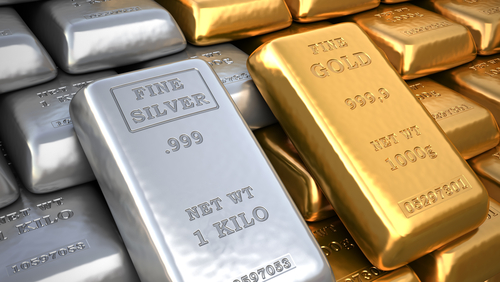Historic Examples of Gold as A Store of Value
Gold and silver have been a valued possession for over 6,000 years. They are a great store of value and under gold standard currency systems, there was little to no inflation. In fact, from 1853 to 1846 gold retained a constant price of $20.67. After this, in 1847 gold went to $20.71 per ounce and then back to $20.67 for the next four years.
During the reign of the Babylonian king Nebuchadnezzar in 562 B.C, an ounce of gold could be used to purchase 350 loaves of bread. Adjusted to today’s price of gold ($1,325.30 per ounce), the price of a loaf would be about $3.79 (to buy 230 loaves per ounce). This is similar to today’s price for a loaf of bread. So gold’s value, in general, stays very stable over time but because of inflation, the purchasing power of the dollar and other fiat currencies drop over time. So gold increases in dollar value over time.

Wealth Cycles
When measuring the increase in value for specific items such as real estate, equities and other investments the dollar and indeed other fiat currencies can be deceptive. Because of inflation and thus the decreased buying power of fiat currency, it can seem like the price of the asset has increased in value, when really it just takes more dollars to buy these assets. In other words, the assets have been the better store of value than the dollar. To get a more accurate measure of whether real estate, equities etc. have risen in value, it is better to measure against a better store of value like gold. Using gold or other good stores of value you can often find assets that seemed to go up in price, have either remained around the same value (the same amount of gold can be used to buy it today, as was needed in the past) or even decreased in value (less gold is needed to buy it today than in the past). For more information on wealth cycles go to https://goldsilver.com/.
Silver
Silver prices are usually more volatile than gold because it takes a smaller amount of money (purchases of silver) to have an impact on the price. However, volatility can be a good thing if you are on the right side of it; buying when prices are low and selling when high. Silver is a lot cheaper than gold and can be measured using the “Gold-to-Silver Ratio”; how much silver it takes to buy one ounce of gold. Since 1687 the Gold-to-Silver Ratio has ranged from roughly 14:1 and 100:1. Pre 1900’s the Gold-to-silver ratio was about 16:1, however, the average during the 20th century was 47:1. At the time of writing this article (March 5th, 2018) the gold to silver ratio is about 79.71. So historically speaking silver is very undervalued.
Other Reasons to Suggest Silver is Undervalued:
To say silver is a useful metal would be an understatement, it is the most electrically and thermally conductive and reflective metal. Modern life, as we know it, would not exist without silver. Photography, batteries, electronics etc. all rely on Silver. In contrast, about 78% of Gold every year is used to make Jewelry and less than 10% is used in industrial applications. In fact, 90% of all gold ever mined still exists today. Whereas Silver stockpiles (already mined) are declining rapidly, so much so that Silver stockpiles are now much smaller than Gold stockpiles. Also, 75% of the supply of newly mined silver originates as a by-product of mining other metals like copper, lead, zinc and gold, so these stockpiles are not going to grow anytime soon. At the current rate of usage, the amount of time that aboveground stocks of silver would last if all mining activity were to cease is now down to just four months. For a comprehensive guide to gold and silver and how to invest in these precious metals, download Mike Maloney’s ebook: Guide to Investing in Gold & Silver, free.





